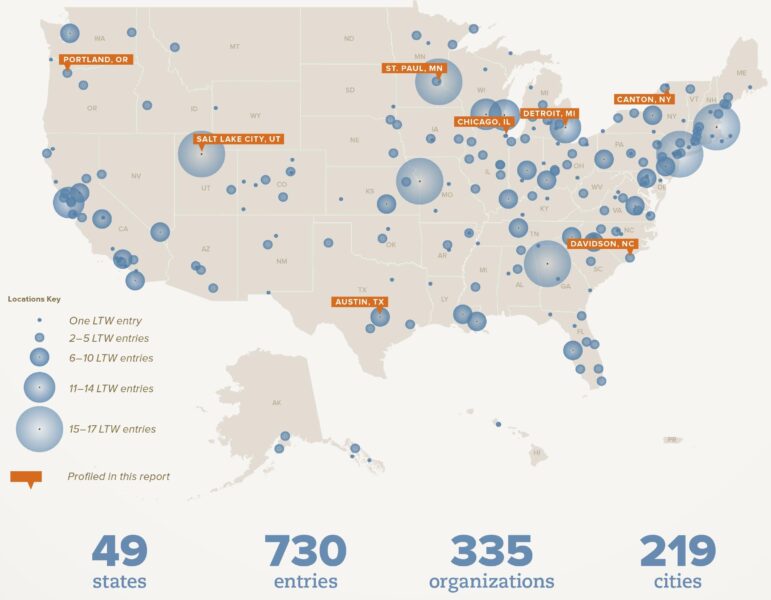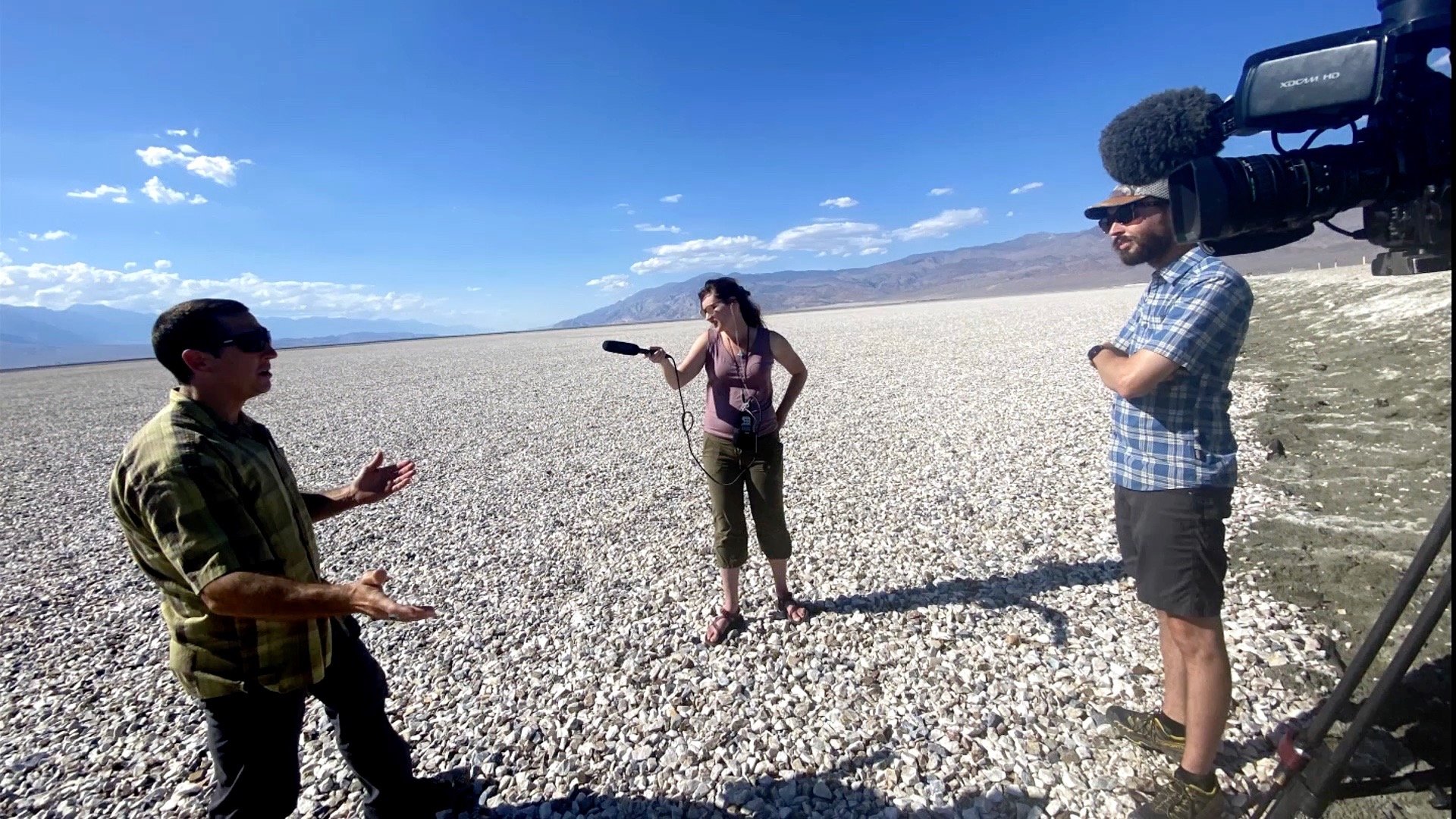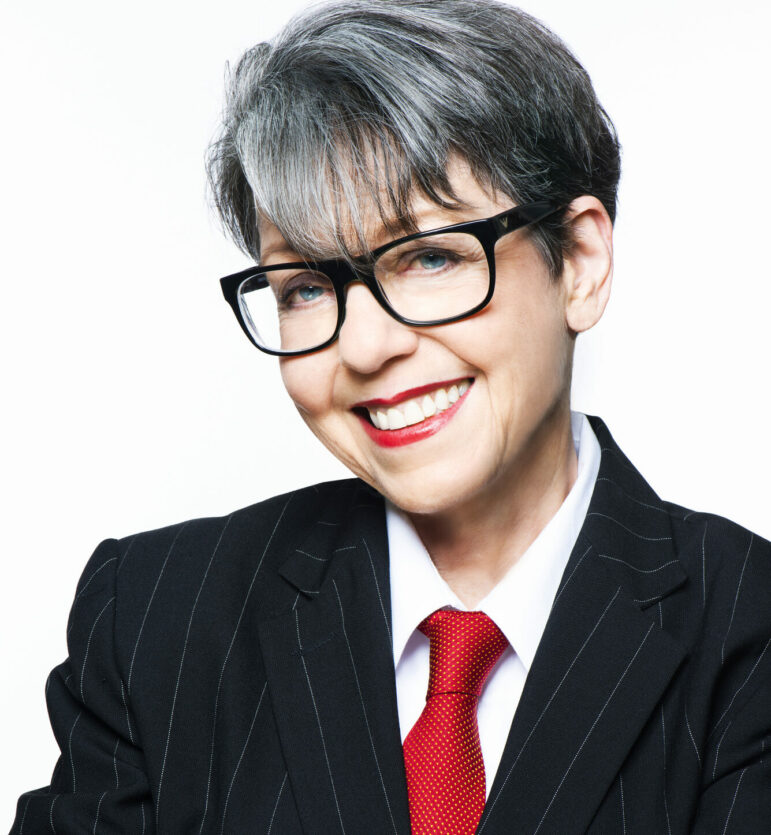What we’ve learned from six years of Local that Works

Clockwise from top left: WWNO producer Laine Kaplan-Levenson and Louisiana resident Cathy Goutierrez; a WDAV Small Batch concert; Mohammed Bakr speaks with a participant at a KUOW "Ask A Muslim" event; Zanaria Banks and Warren Griffin-Yates rehearse for “Precious Lives: The Live Show.”
A new report from the Wyncote Foundation reviews highlights of Local that Works, the Wyncote-funded project produced in collaboration with Current and Public Media Futures. For six years, Local that Works has showcased innovative initiatives at public media stations and nonprofit news organizations. The report shares examples of notable projects, along with lessons learned from the annual competition. This excerpt is republished here with permission. Read the full report here.
Local that Works began in the summer of 2016, when many station leaders in public radio were pessimistic about the future of their industry — for good reason.
Competition was increasing. Nonprofit digital news sites had launched in many American cities. Serial, the real-crime audio documentary, demonstrated the blockbuster potential of podcasting in the world of high-quality audio journalism, which had been dominated by NPR and top-performing local stations. Talented and experienced people started leaving public radio, sensing the opportunities in podcasting and digital news startups. A report in The Wall Street Journal summed it up this way: “With both its stars and audience aging, NPR is struggling to adapt to the digital age.”
Local that Works was a direct response to this pessimism and oversimplification, making the case that, despite serious challenges, public media has also been growing and strengthening in ways not immediately visible to the national field. LTW was developed to identify opportunities for change by collecting and sharing examples that showed how the public media field could evolve. Mark Fuerst laid out the premise of this new Wyncote project in the title of a paper he published in Current in October 2016 titled, “Changing the conversation: Embracing Local that Works.”
Previous Wyncote-supported research had already revealed that predictions of an imminent public media system collapse were off the mark. Public radio had proven to be remarkably resilient during the first two decades of digital disruption. The fundamentals of the business model remained strong, the system was reaching tens of millions of people every week, and the strongest stations continued to advance. This view was reinforced and documented in a 2022 Wyncote white paper published at the Tow Center for Digital Journalism at Columbia University, titled “The Growing Strength of Public Media Local Journalism.”
However, in 2016, many signs pointed in the other direction: toward industry decline. Stations struggled to shift away from a broadcast model reliant on national programming to new forms of multiplatform digital service.
Over six years, Local that Works has served as an avenue for sharing examples of innovative and effective local service, with special attention to three characteristics. The program looked for projects or practices that:
- Were widely applicable at large, medium, and smaller stations;
- Were repeatable, in that the projects delivered content or services day after day (vs. “one-offs”); and
- Provided multiplatform output, including broadcast programming, podcasts, online and mobile service, and in some cases, in-person engagement.
In 2019, Local that Works expanded its outreach to capture more examples from the groundbreaking work surfacing in other sectors of nonprofit media, including the rapidly expanding group of journalism organizations working under the banners of the Institute for Nonprofit News, the Local Media Association, and Gather, the University of Oregon’s center for engaged journalism.
Local that Works’ organizers have hosted more than 60 conference sessions, seminars, and webinars, always with the same purpose: to highlight innovative projects that could be adapted to local conditions across a wide range of organizations.
Examples were sourced by an open call for entries to the annual Local that Works contest. An expert panel sorted through the entries, picked four or five finalists (projects of unusual impact and value), and the finalists were invited to present their work at a conference (after 2019, this shifted to a webcast). Several hundred media professionals attended these “finals,” and with their votes would select a winner, who received a $20,000 project grant.
Even after reaching out to a wider range of public service media, most entries continued to come from CPB-funded public radio and TV stations. Nonetheless, submissions from outside public media grew each year, and in 2022, 35% of entries came from outside that legacy cohort, including three (of five) finalists from independent local news organizations.

The LTW database on Current’s website contains more than 700 examples of local projects. Sixty-one have been presented over the years in conferences, webinars, and webcasts. The examples span a very wide range of public service programming, from early childhood education, to community book clubs and concerts, to powerful collaborative investigative reporting projects that have changed legislation and influenced local police practices.
What have we learned?
- For all the challenges it faces, public media remains resilient, with many organizations showing the scale, reach, and capacity to become leaders in local news ecosystems. These organizations can forge large-scale collaborations with other news entities. They can partner with civic and cultural organizations. Working with other local groups, they can identify, uplift, and amplify local themes, ideas, and concerns.
- The vast majority of Local that Works finalists are based in large metropolitan areas with strong philanthropic sectors investing in local news initiatives. Smaller communities, especially rural areas with less access to funding, are not evolving at the same pace. The lack of access to philanthropic investment in rural areas is ripe for attention within the funding centers now working to rebuild local news ecosystems.
- Women are playing an ever more prominent role in nonprofit journalism. In the first two years that Local that Works solicited submissions (2017 and 2018), only 41% of projects selected for conference or webinar sessions (seven out of 17) had women presenting or directing the work. In the last two years, 68% of featured projects (16 out of 24) were led by women, with all five 2022 finalists presented or directed by women.
- Local that Works submissions reflect a broader prioritization among media organizations on staff and audience diversity. In the first two years the program solicited submissions, 35% of featured projects (six out of 17) focused on diversity and inclusion, sometimes by targeting service to underserved audiences. In the most recent two years (2021 and 2022), 58% of projects (14 out of 24) presented in conference or webinar sessions amplified underheard voices or advanced diversity, equity, and inclusion efforts.
- Several Local that Works finalists have matured into independent organizations. Low barriers to entry for newer online journalism sites have provided significant opportunities for growth, impact, collaboration, and innovation outside legacy public media organizations, even if these enterprises initially hosted such projects and incubated their launches.
Finally, over time, the annual call for entries shows an increasing percentage of high-impact collaborations. Two thirds of Local that Works finalists (20 out of 30) were collaborations, as were three-quarters of overall featured projects (45 out of 61). Several factors appear to be at work. As newspapers continue to contract, building large-scale public service journalism projects requires a collaborative effort. Even the largest local newsrooms cannot support months-long expansive reporting; joining forces makes sense. Second, collaborations between and among local partners provide avenues for fragmented audiences to recombine and reconnect. Multiple collaborators can bring disparate communities together in new ways, reaching beyond each organization’s audience and becoming a force for wider community engagement, discussion, and problem-solving.
Sarah Lutman is founder and managing director at 8 Bridges Workshop, a consulting firm producing projects that include strategic plans, program evaluations and field-building reports. Recent clients include the Wyncote Foundation, the Knight Foundation, and the Doris Duke Charitable Foundation. Prior to founding 8 Bridges Workshop, Lutman served as president and managing director of the Saint Paul Chamber Orchestra. She was previously senior VP for content and media at American Public Media, where she was responsible for all broadcast, digital, and live event programming.
Jessica Fiala, research associate, has been with 8 Bridges Workshop since 2012, working on projects ranging from research and analysis to writing and editing, workshop development, program evaluation and project management. Jessica coordinated the artist grant program at Forecast Public Art from 2014–17, served as the Research Coordinator for the 2015 International Award for Public Art, and has continued as a nominator and researcher for the award. She is a company member of Ragamala Dance where she performs, teaches and leads community engagement activities.





